What is Reflective Stickers?
The main purpose of Reflective Printing is to reflect light back. When light falls on a printed design—especially at night or in low-light environments—the print glows, which not only enhances its beauty but also highlights its safety aspect. This printing technique is not used only for aesthetic purposes, but also for safety wear, such as road workers’ uniforms and night runners’ apparel, so that they remain visible in the dark.
Special materials are used in reflective printing, which reflect light back to its source instead of absorbing or scattering it
Send us your logo or design now to see how it looks with this printing technique and get a free 3D mockup within 24 hours.
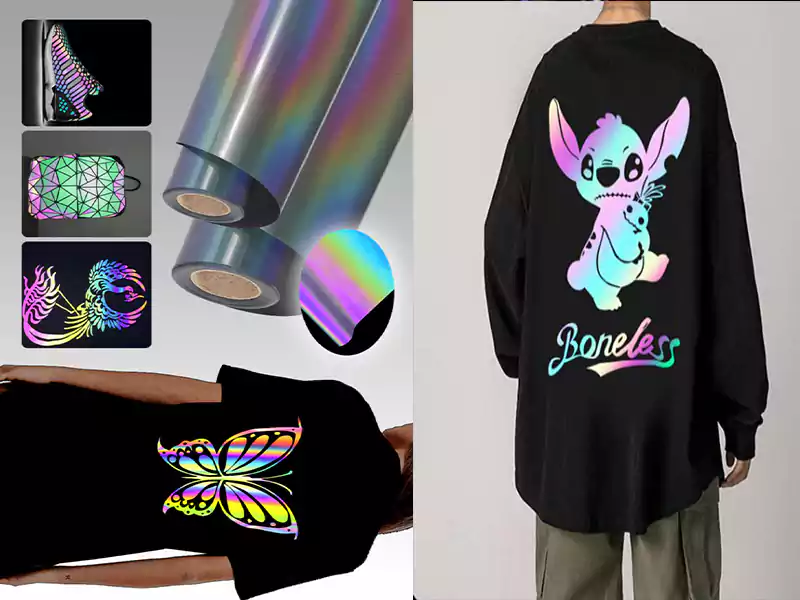
From Concept to Perfection Explore Our Reflective Printed Products Collection.
As an experienced and professional clothing manufacturer, we specialize in bringing innovation and quality together. With our expertise in reflective-stickers, printing technique, we have crafted a wide range of products including t-shirts, hoodies, sweatshirts, and tracksuits that stand out with their unique appeal. This carousel showcases how reflective-stickers adds depth, texture, and vibrant detail to garments, turning simple apparel into premium fashion pieces. Backed by years of manufacturing experience and advanced printing skills, we help brands create collections that not only look stunning but also reflect durability and craftsmanship. Trust our expertise to transform your vision into reality with precision and style.
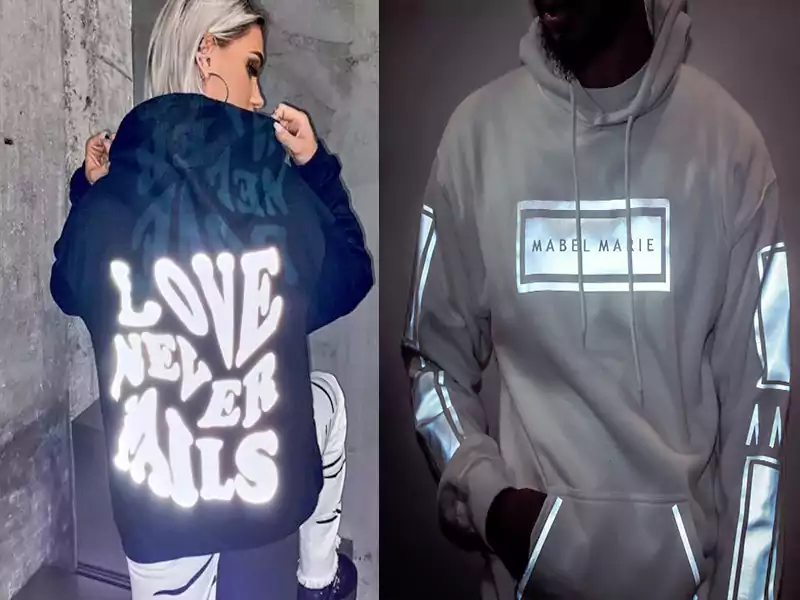
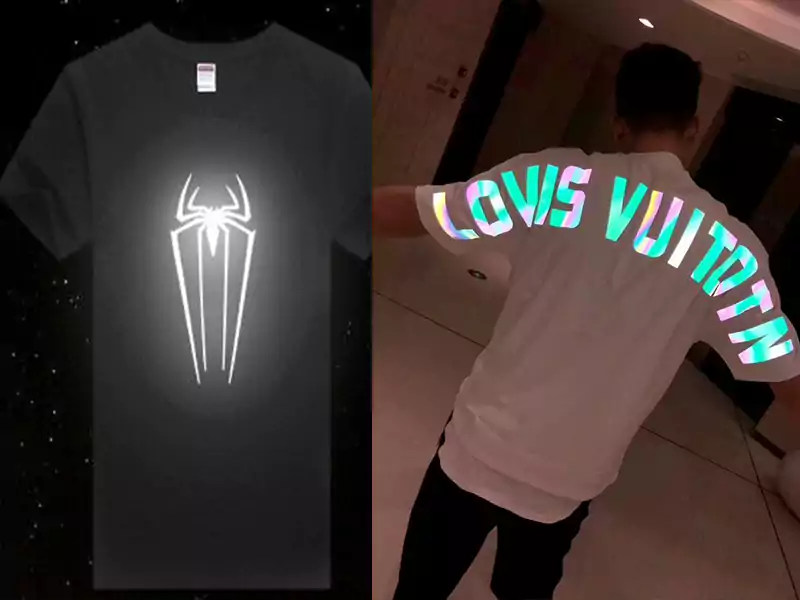
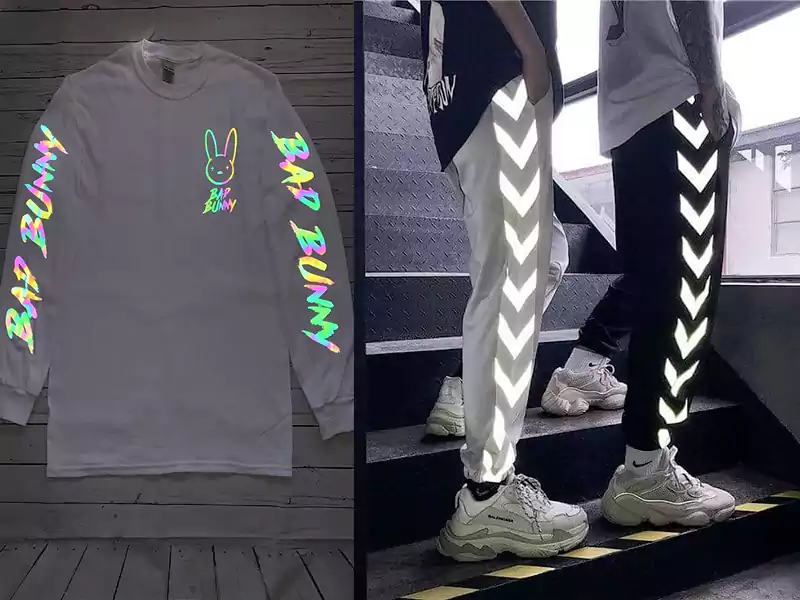
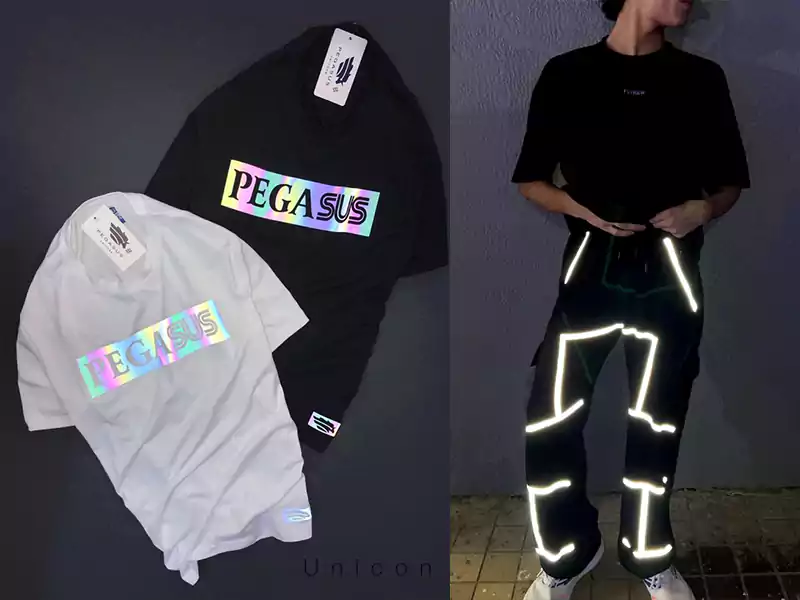
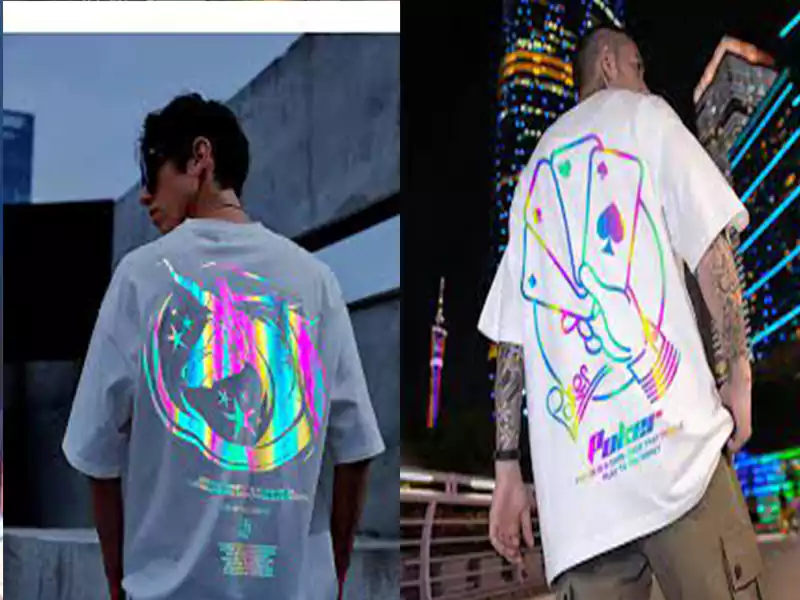
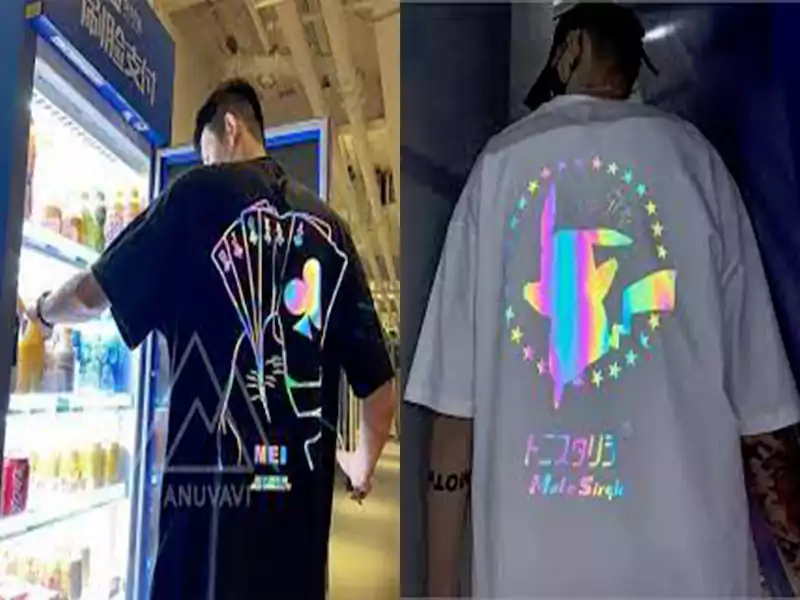
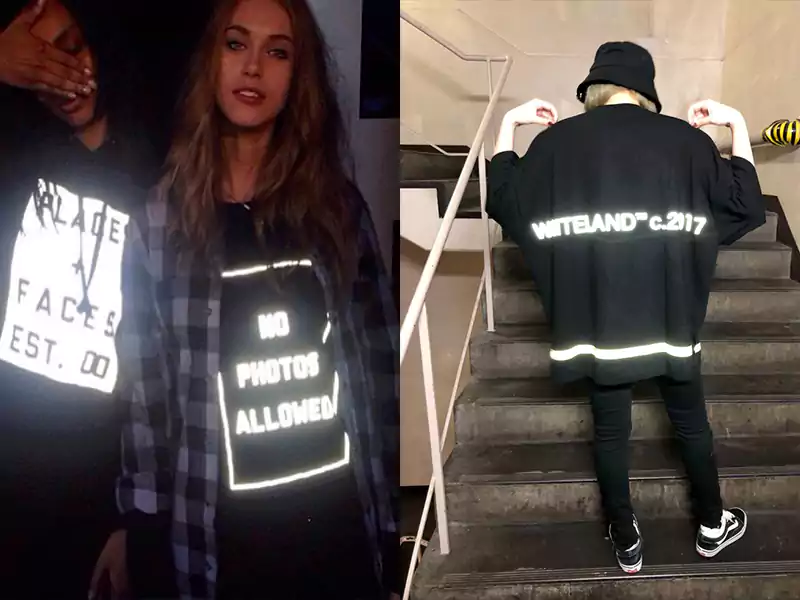
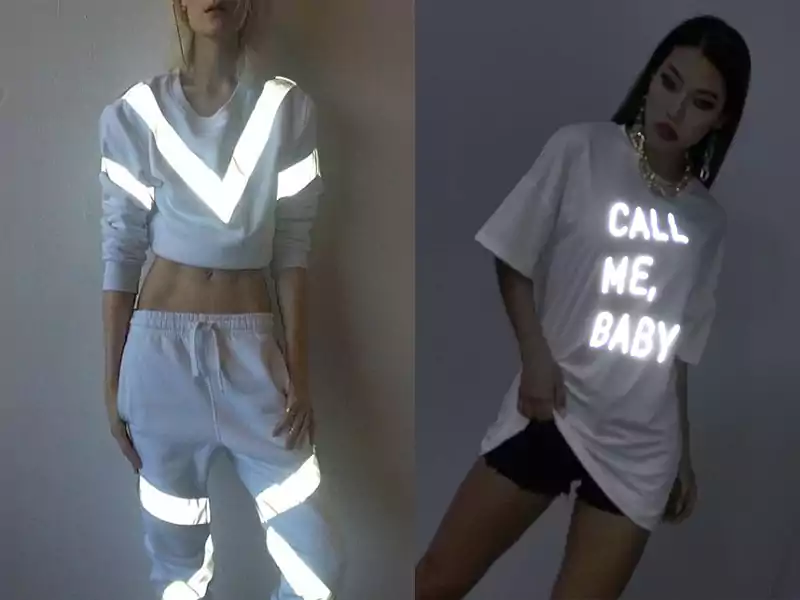
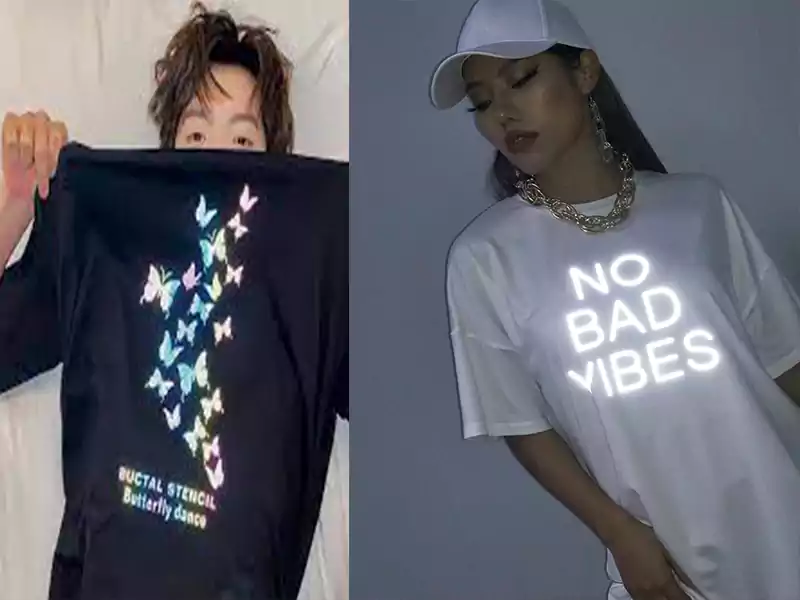
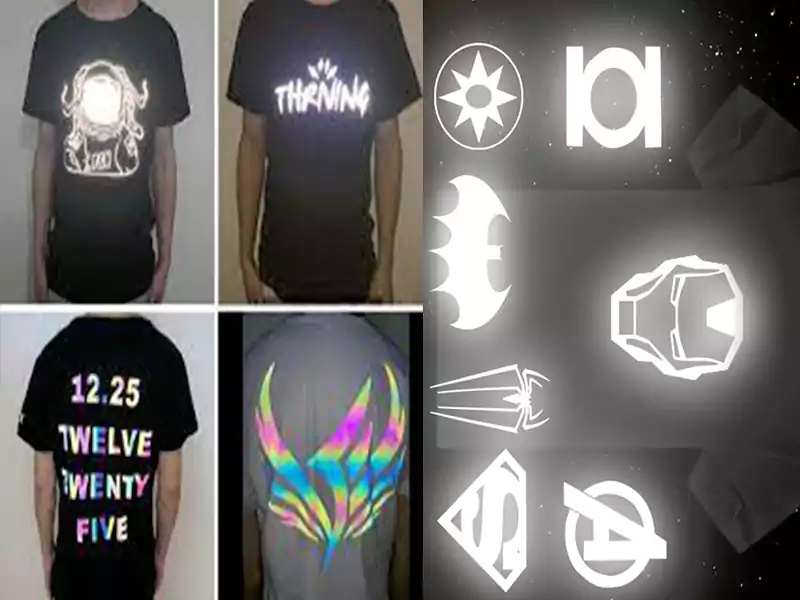
Types / Techniques of Reflective Printing
Reflective printing should not be seen in a limited sense, because this technique can be integrated with many different printing methods. Below are the main methods:
1. Reflective Heat Transfer Vinyl (HTV)
The most common and simple method, where reflective vinyl sheets (like Siser or 3M) are applied to fabric using heat and pressure. The reflective effect is pre-built into the vinyl.
2. Reflective DPF Stickers
Special stickers that can be applied on garments, jackets, or other surfaces. DPF (“Digital Print Film”) can also include reflective agents so that it glows when exposed to light.
3. Reflective Screen Printing
In traditional screen printing, reflective inks are used—especially inks containing micro glass beads or aluminum bases. This method is durable and suitable for large-volume printing.
4. Digital Reflective Printing
Modern digital printers can print on specific substrates that already contain reflective particles. This technique is suitable for high-detail designs.
5. Special Effects or Spray Paint Reflection
Sometimes reflective spray paints or powders are used on any surface—mainly for DIY projects and prototypes.
6. Embroidery with Reflective Threads
Reflective printing is not limited to printing only. In embroidery, reflective threads can be used, giving fabric a natural yet luminous look.
7. UV or Light-Responsive Printing
Although not fully reflective, some printing reacts to UV or special light, which can also be categorized under partial reflective printing.
History of Reflective Printing
The roots of reflective printing are linked with industrial safety requirements. It dates back to the 1930s, when materials were sought to keep road workers visible in darkness or low light. In the 1940s, 3M began working on reflective materials and introduced the first reflective tapes and sheets. Gradually, this technique was adopted in garments, textiles, shoes, and bags, not only for style but also for nighttime safety. Today, reflective printing has become an essential part of high-visibility clothing worldwide.
Applications of Reflective Printing
Reflective printing is widely used across multiple industries:
• Road Safety Wear: Jackets for road workers, police, and traffic controllers.
• Sportswear: Apparel for night runners, cyclists, and outdoor athletes.
• Fashion Industry: High-end brands include reflective prints in their lines.
• Bags & Accessories: School bags, travel bags that are visible at night.
• Shoes: Sports shoes or children’s footwear with reflective material.
• Promotional Products: Companies highlight logos or messages using reflective printing.
How Reflective Printing is Done – Step by Step
Reflective printing is not just about adding shiny ink or sheets. It is a technical, multi-step process requiring precision. Every factor—materials, machines, temperature control, and fabric type—plays a role to ensure the print is both beautiful and durable.
1. Design Preparation
• High-contrast lines and flat areas are essential since reflection works best on smooth, solid areas.
• Proper size and placement matter because reflective materials are expensive.
• Vector formats (.AI, .EPS, .SVG) are preferred for accurate cutting/printing.
2. Selection of Reflective Material
Choice of material depends on garment type, required brightness, and end-use. For example, for night-running jackets, 3M Scotchlite vinyl or high-intensity reflective ink is used.
• Reflective HTV Sheets
• Reflective Ink
• Reflective Films / DPF Stickers
3. Fabric Preparation
• Fabric must be fully clean and dry.
• Pre-heating is done to remove moisture for better bonding.
• Pre-treatment may be applied in case of screen printing.
4. Printing Process – Based on Technique
A. Heat Transfer Vinyl (HTV)
1. Cutting – Vinyl sheets are cut using machines (Cricut, Graphtec). Extra parts are weeded out.
2. Placement – Vinyl is carefully positioned on fabric.
3. Heat Pressing – Heat press machine applies ~150–160°C for 10–15 seconds. Vinyl bonds permanently.
4. Cooling & Peeling – Some vinyl’s are peeled hot, others cold.
B. Screen Printing with Reflective Ink
1. Screen prepared with emulsion.
2. Reflective ink mixed with micro glass beads.
3. Ink applied through screen onto fabric (single or double coat).
4. Heat cure / IR dryer used for drying & curing.
C. Digital Reflective Printing
1. Printed on substrates pre-coated with reflective material.
2. Inkjet printing with special UV-curing or solvent inks.
3. Final sealing coat may be applied for protection.
5. Quality Inspection
• Flashlight or photo test for reflectivity.
• Check adhesion, brightness, bubbles, or cracks.
• Wash tests for durability.
FAQ'S
What is reflective printing?
Reflective printing is a special technique using materials that glow or reflect light back when illuminated. Mostly used in safety clothing, sportswear, and uniforms.
Why is reflective printing expensive?
Because it uses specialized materials (micro glass beads, premium vinyls, unique inks) and requires precision machinery.
How can reflective printing be made more durable?
• Wash garments inside-out
• Use mild detergents
• Avoid bleach or harsh chemicals
• Wash at low temperature
• Do not iron directly
Is reflective printing only for fabrics?
No. It can also be applied on shoes, bags, jackets, helmets, banners, and signboards—any surface that supports reflective material.
Are color options available in reflective printing?
Yes. Reflective materials are now available in silver, red, neon green, blue, gold, holographic (rainbow effect), etc. The brightest reflection, however, is achieved with silver or white base.
What’s the difference between Reflective Printing and Glow-in-the-Dark?
• Reflective Printing shines only when exposed to a light source (like car headlights).
• Glow-in-the-Dark absorbs light first, then glows on its own in darkness.
What methods are available for reflective printing?
• Reflective Vinyl Heat Transfer
• Reflective DTF Stickers
• Screen Printing with Reflective Ink
• Sublimation + Reflective Coating
• Reflective Thermal Flakes / Powder Printing
• Reflective Embroidery Threads
• Reflective Spray or Paint
How long does reflective printing last?
If done properly and washed with care, it lasts for years. But heavy machine washing or harsh treatment can reduce brightness over time.
Can I do reflective printing at home?
Yes, with a heat press machine and reflective vinyl sheets, you can. These are available online, and tutorials are easily found.
Is reflective vinyl washable?
Yes, most high-quality reflective vinyls are washable. But care is needed: wash in mild water, avoid bleach, do not iron directly, and wash at low temperature.
Which fabrics are best for reflective printing?
Polyester, nylon, cotton-poly blends, and sports fabrics. For stretch or rubberized fabrics, special reflective HTV is used.
Which printing techniques can be combined with reflective printing?
• Screen Printing + Reflective Ink
• Embroidery + Reflective Thread
Is reflective printing possible with sublimation?
Not directly, because sublimation inks penetrate fabric, while reflective effects stay on the surface. However, sublimation can be combined with reflective sprays or coatings.
What machines are required?
• Heat Press (for vinyl/flex sheets)
• Screen Printing Machine (for reflective inks)
• DTF Printer + Heat Press (for reflective DTF stickers)
• UV Printer (for inks/sprays)
• Embroidery Machine (for reflective threads)
